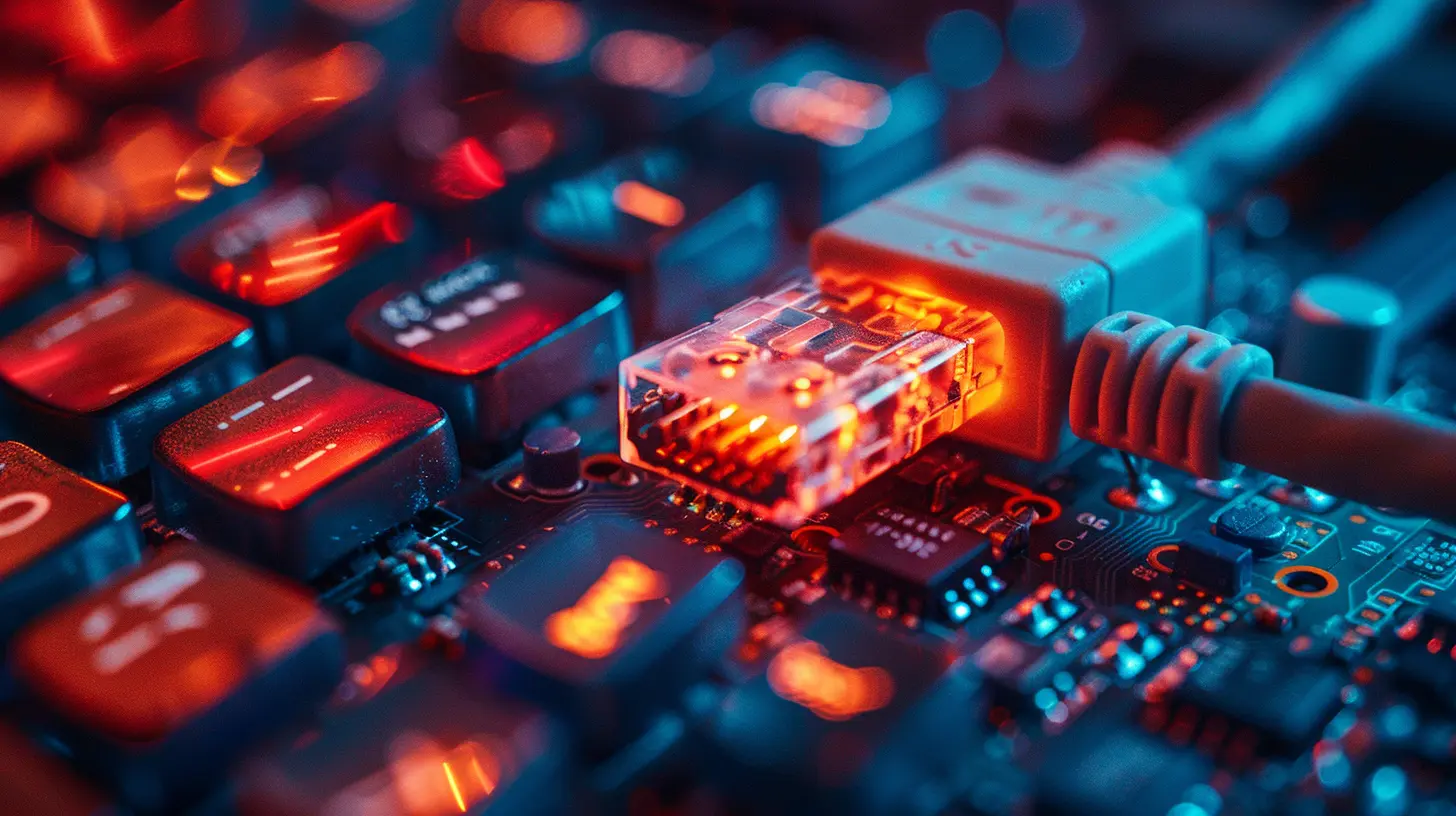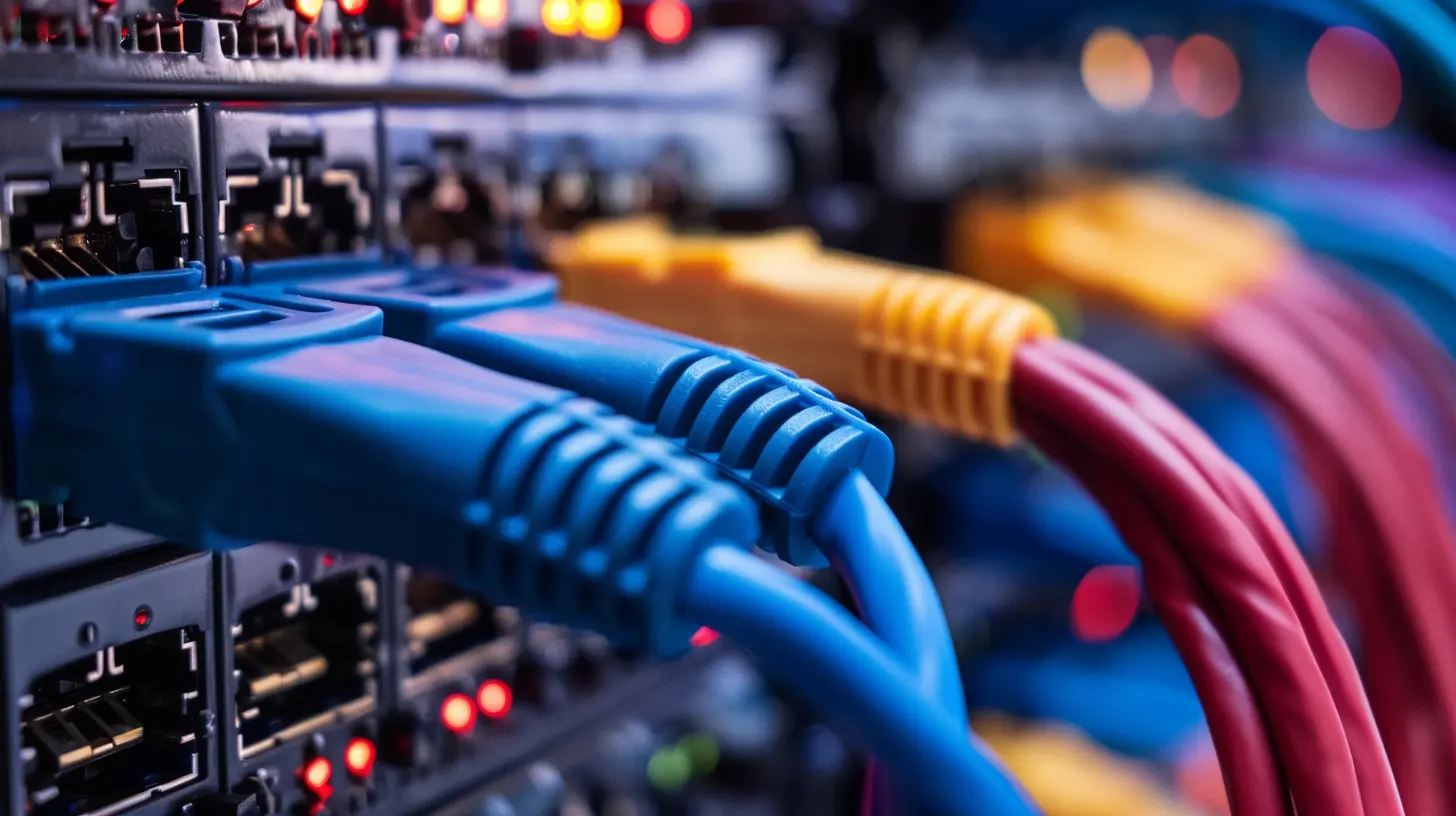Latency-Free Gaming: What to Look for in Ethernet Cables
8 August 2025
If you’re a gamer, you’ve probably raged over lag at least once in your life—it’s practically a rite of passage. Whether you’re grinding ranked matches or just vibing in an open-world RPG, nothing ruins the fun faster than an unstable connection. While Wi-Fi is super convenient, it can’t always keep pace with the demands of gaming. That’s where Ethernet cables step in like the unsung heroes they are, delivering speed and stability that Wi-Fi can only dream of.
But wait—an Ethernet cable is just a cable, right? Not so fast! Not all Ethernet cables are made equal, and picking the right one can mean the difference between smooth, latency-free gaming and smashing your controller in frustration. Let’s break it all down, so you know exactly what to look for. Fair warning: we’re about to dive deep (but don’t worry, I’ll keep it simple).
Why Ethernet Cables Matter for Gaming
Before we geek out over specs, let’s clear one thing up—why bother with Ethernet cables for gaming? It’s all about reducing latency, my friend.Latency is the time it takes for data to travel from your device to the game server and back. In gaming, low latency is king. Think of it like this: if gaming is a race, latency is the lag on your reaction time. The higher the latency, the slower your inputs reach the game, making you feel like you're running with ankle weights while everyone else is sprinting.
Wi-Fi is notorious for latency spikes (thanks, random interference from your neighbor’s microwave). Ethernet, on the other hand, keeps things smooth and predictable. It’s like cruising down an open highway versus navigating a traffic jam—Ethernet is always the better choice if you’ve got the option.
Key Features to Look for in Ethernet Cables
So, how do you pick the right Ethernet cable for gaming? Here’s the cheat sheet. It basically boils down to speed, shielding, and future-proofing.1. Look for the Right Category
Ethernet cables are categorized by numbers, like Cat5, Cat6, and Cat7. Each category represents a different level of speed and performance. Here’s the gist:- Cat5e: The bare minimum you should consider for gaming. It offers speeds up to 1 Gbps and handles most gaming setups just fine.
- Cat6: A noticeable upgrade, supporting speeds up to 10 Gbps with better shielding against interference. Great for competitive gaming.
- Cat7: Even more shielding and speeds up to 10 Gbps. Probably overkill unless you’re a hardcore gamer or streaming in 4K.
- Cat8: The top-tier choice. Think of this as the Ferrari of Ethernet cables, with speeds up to 40 Gbps. Perfect for future-proofing, but pricier.
For most people, Cat6 hits the sweet spot between performance and cost. Unless you’re rocking ridiculously fast internet or planning for the apocalypse, Cat8 is more luxury than necessity.
2. Check the Cable Length
Here’s a mistake a lot of us make: underestimating cable length. Measure twice and buy once! While Ethernet cables can be surprisingly long, they lose performance over distance. Try to keep the length under 100 meters unless you’re using a super high-end cable like Cat7 or Cat8.Going shorter is always better for gaming. Think of it like a straight line versus a twisty road—the less distance your data has to travel, the better.
3. Shielding and Interference
Ever wonder why your signal cuts out when someone turns on the vacuum? That’s interference, and it can mess with your connection even on Ethernet. Shielding is like armor for your cable, keeping it safe from outside noise.- UTP (Unshielded Twisted Pair): Fine for basic setups, but avoid it if you’ve got a lot of devices in one room.
- STP (Shielded Twisted Pair): Better option for gaming. It’s like putting noise-canceling headphones on your cable.
If you’re gaming in a busy apartment or have a ton of electronics in your setup, go for shielded cables to keep interference at bay.
4. Build Quality
Let’s be real—cheap cables can be tempting, but they don’t last. Look for Ethernet cables that feel sturdy, have reinforced connectors, and use high-quality materials. Bonus points if they’re flat cables; they’re easier to manage and don’t trip you up every time you cross your game room.
Gaming Setup Compatibility: Don’t Skip This!
Before you go all-in on a shiny new Ethernet cable, make sure it’s compatible with your gaming setup. For example, if your router doesn’t support speeds higher than 1 Gbps, buying a Cat8 cable is overkill. Match your cable’s capability to your hardware for the best bang for your buck.Also, check your gaming device. Whether it’s a PC, console, or even a streaming stick, ensure it has an Ethernet port and can support gigabit speeds. If not, you might need an adapter (sorry, Nintendo Switch fans, that means you).
Future-Proofing: Is It Worth It?
Technology changes faster than you swap operators in Rainbow Six Siege. While a Cat6 cable may be all you need today, going for something higher like Cat7 or Cat8 could save you an upgrade in the future. Think of it like buying shoes one size too big for a growing kid—you might not need it now, but it’ll save you money (and hassle) down the line.Ethernet vs. Wi-Fi: The Final Verdict
Let’s be honest: Wi-Fi is convenient. Nobody wants to trip over cables in 2023. But when it comes to gaming, Ethernet wins every single time.Picture this: you’re in a tense 1v1 match, and Wi-Fi decides to lag because your roommate started streaming a cooking show. Ethernet cables eliminate that drama. It’s like upgrading from a sketchy old bike to a sports car. Yes, it’s a little more effort to set up, but the payoff is undeniable.
If you’re serious about gaming—or just hate losing because of technical hiccups—making the switch is a no-brainer.
Tips for Setting Up Your Ethernet Cable
To get the most out of your cable, follow these quick tips:1. Avoid sharp bends: Treat your cable with care. Bending it too sharply can damage the internal wiring.
2. Use cable management solutions: Zip ties, clips, or raceways keep things tidy and prevent tripping hazards.
3. Test your connection regularly: Use tools like speedtest.net to ensure you’re getting the performance you paid for.
4. Upgrade your router if needed: A high-quality Ethernet cable won’t help much if your router is outdated.
Final Thoughts: Is Latency-Free Gaming Worth It?
Absolutely! Gaming is supposed to be fun, not frustrating. Whether you’re playing competitively or just chilling with friends, a good Ethernet cable guarantees faster speeds, lower latency, and fewer “WTF” moments. Picking the right cable doesn’t have to be complicated—just check the category, length, and shielding, and match it up with your setup.So go ahead, grab that Cat6 or Cat7 cable, and enjoy the smooth, lag-free gaming experience you deserve. Your future self, mid-session in a heated boss fight, will thank you.
all images in this post were generated using AI tools
Category:
Gaming GearAuthor:

Stephanie Abbott
Discussion
rate this article
1 comments
Zayn Hines
Choose high-quality, shielded cables for optimal performance and minimal latency.
August 20, 2025 at 3:51 AM

Stephanie Abbott
Absolutely! High-quality, shielded cables are essential for reducing interference and ensuring the best gaming experience.


